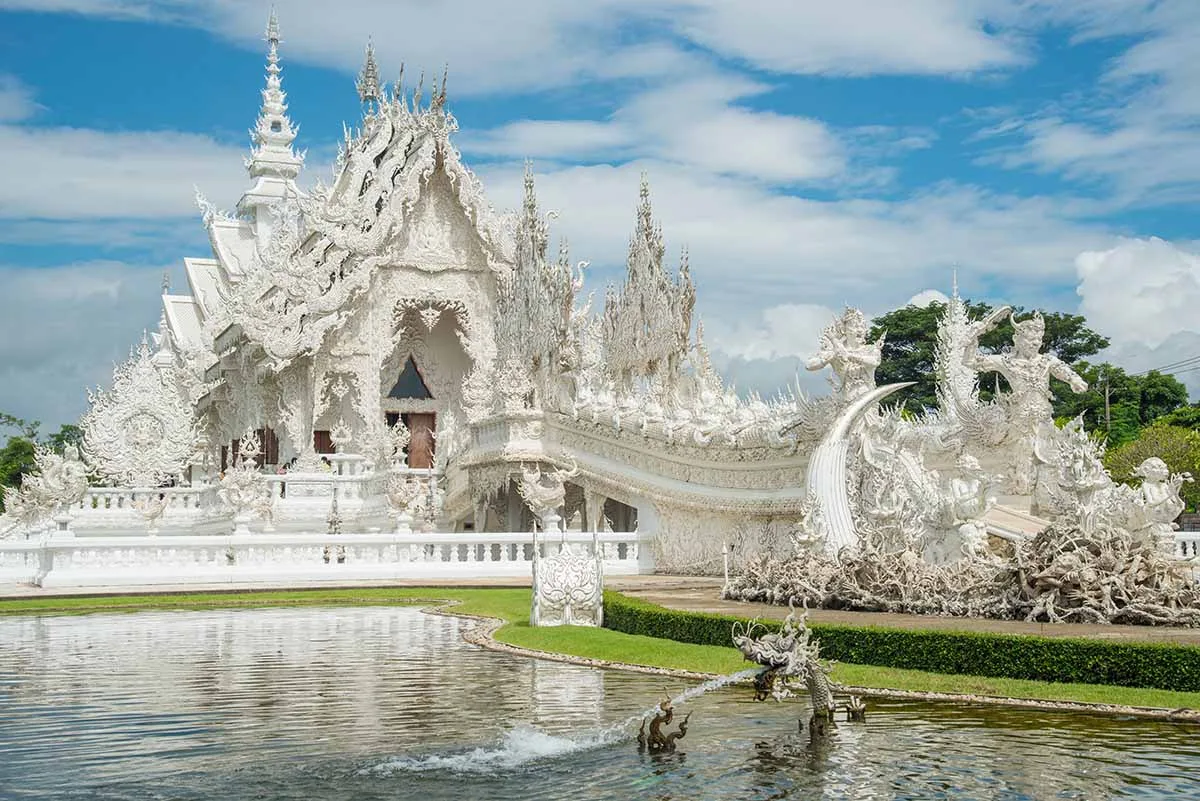10 Hidden Gems in Chiang Rai You Absolutely Need to Visit
Chiang Rai may sit quietly in the shadow of its more famous sibling, Chiang Mai, but don’t let its modest reputation fool you. This northern Thai city is a treasure trove of surreal temples, misty mountain vistas, and cultural oddities that defy expectations. While most tourists flock to the iconic White Temple, those with a curious spirit will find a deeper, more eclectic side to Chiang Rai—one that blends art, nature, and tradition in ways that are both haunting and beautiful. Whether you’re a seasoned traveler or a first-time explorer, this guide will take you beyond the usual itinerary and into the heart of Chiang Rai’s most captivating hidden gems. From electric-blue temples to jungle hot springs and eerie museums, prepare to uncover the unexpected.
1. Wat Rong Khun (White Temple’s Quieter Neighbor)

Yes, the White Temple is stunning, but have you heard of its electric-blue counterpart, Wat Rong Suea Ten? Often dubbed the “Blue Temple,” this lesser-known marvel offers a surreal experience without the tourist throngs. Located just a short drive from Chiang Rai city center, it’s a feast for the senses: shimmering sapphire walls, golden trim, and celestial murals that seem to pulse with divine energy.
Designed by a student of Chalermchai Kositpipat (the White Temple’s creator), the Blue Temple blends traditional Lanna architecture with psychedelic artistry. Inside, a radiant white Buddha sits serenely against a backdrop of swirling cosmic motifs, inviting quiet reflection and awe. The temple’s name—“House of the Dancing Tiger”—hints at its mystical roots, said to be built on a site once roamed by tigers.
Whether you’re a spiritual seeker, an art lover, or just chasing unique photo ops, Wat Rong Suea Ten delivers a dreamlike escape that feels both sacred and otherworldly. Visit early in the morning for soft light and near solitude, or stay until dusk when the blue hues deepen into twilight magic.
2. Baan Dam Museum (The Black House) – A Darkly Beautiful Mystery

If Tim Burton designed a museum in northern Thailand, it would look a lot like Baan Dam. Known as “The Black House,” this surreal compound is a sprawling collection of over 40 black-themed structures that blur the line between art installation and spiritual provocation. Created by the late Thai artist Thawan Duchanee, Baan Dam is a masterclass in gothic Thai expressionism—equal parts haunting, beautiful, and bizarre.
Step inside and you’ll find a world of contrasts: buffalo skulls arranged like altars, crocodile skins draped over long wooden tables, and intricate carvings that evoke both ancient rituals and modern angst. The architecture itself is a fusion of traditional Lanna design and dark fantasy, with towering gables and shadowy interiors that feel like portals to another realm.
Unlike the ethereal purity of the White Temple, Baan Dam confronts visitors with the raw, primal side of existence—death, decay, and the cycle of life. It’s not for the faint of heart, but for those willing to explore its depths, the museum offers a profound, if unsettling, meditation on Thai identity, spirituality, and the human condition.
Travel Tip: Located about 10 kilometers north of Chiang Rai, Baan Dam is best visited in the late morning when the light filters dramatically through the dark wood structures. Don’t miss the artist’s former residence and the small gallery shop featuring his lesser-known works.
3. Phu Chi Fa – Where the Clouds Meet the Mountains

Ever wanted to walk among the clouds? Phu Chi Fa makes that dream feel real. Perched on the edge of the Thai-Laos border, this breathtaking mountain viewpoint offers one of the most surreal sunrise experiences in Southeast Asia. As dawn breaks, misty clouds cascade over the hills like a slow-motion waterfall, revealing layers of emerald peaks bathed in golden light. It’s nature’s version of a slow reveal—ethereal, humbling, and unforgettable.
The name “Phu Chi Fa” translates to “the mountain that points to the sky,” and it lives up to its poetic promise. At 1,628 meters above sea level, the summit offers panoramic views that stretch across the Mekong River basin into Laos. On clear mornings, you’ll witness a sea of clouds below, with jagged peaks poking through like islands in a dreamscape.
Getting there requires a bit of effort—a scenic 3-hour drive from Chiang Rai followed by a short hike to the summit—but the payoff is immense. Along the way, you’ll pass through remote villages, winding forest roads, and tea plantations that add to the journey’s charm.
Travel Tip: Arrive before 5:30 AM to catch the full sunrise spectacle. Dress warmly—temperatures can drop sharply at altitude—and bring a flashlight for the pre-dawn hike. Local vendors often sell hot tea and grilled snacks near the trailhead, adding a cozy touch to your mountaintop morning.
4. The Secret Hot Springs of Pong Phra Bat

Tired of the usual tourist traps? Trade the selfie sticks for steam clouds at Pong Phra Bat Hot Springs, a hidden oasis tucked into the lush outskirts of Chiang Rai. Here, naturally heated mineral pools bubble gently beneath a canopy of tropical trees, offering a tranquil soak that feels more like a jungle baptism than a spa day.
Unlike the polished, ticketed hot springs found in more commercialized areas, Pong Phra Bat retains its raw charm. The pools are simple but soothing, surrounded by mossy rocks, chirping birds, and the occasional monkey eyeing your relaxation technique with quiet judgment. It’s the kind of place where time slows down, and the only agenda is to let go.
The springs are believed to have therapeutic properties, with mineral-rich waters that locals swear by for easing muscle tension and improving circulation. Whether you’re recovering from a mountain trek or just craving a moment of serenity, this spot delivers.
Travel Tip: Bring a towel, wear modest swimwear, and arrive early to avoid the small weekend crowd. Combine your visit with a short hike to the nearby Pong Phra Bat Waterfall for a full nature immersion.
5. The Hidden Art Village of Doi Din Dang

Art lovers, rejoice! Tucked away in the serene hills just outside Chiang Rai, Doi Din Dang Pottery Village is a sanctuary of creativity and calm. Founded by renowned Thai ceramicist Somluck Pantiboon, this tranquil enclave invites visitors to witness the magic of clay transformed into art—slowly, deliberately, and entirely by hand.
As you wander through the open-air studios and leafy courtyards, you’ll see artisans shaping bowls, vases, and sculptures using traditional techniques passed down through generations. The earthy tones, organic textures, and minimalist designs reflect a deep connection to nature and Thai aesthetics. It’s not just pottery—it’s philosophy in form.
The village also houses a small gallery and shop where you can browse and purchase one-of-a-kind pieces. From rustic tea sets to abstract sculptures, each item carries the fingerprint of its maker and the spirit of the land. And let’s be honest—your fridge magnets could use a serious upgrade.
Travel Tip: Visit during weekdays for a quieter experience and a chance to chat with the artists. If you’re lucky, you might catch a live demonstration or even join a hands-on workshop. Combine your visit with a stop at nearby tea plantations or waterfalls for a full day of nature and culture.
6. Choui Fong Tea Plantation – A Green Paradise

Forget Starbucks; Chiang Rai’s Choui Fong Tea Plantation is where true tea magic brews. Nestled in the rolling highlands of Mae Chan district, this sprawling estate is a verdant paradise of neatly terraced tea fields stretching as far as the eye can see. It’s the kind of place where you instinctively slow down, breathe deeper, and start imagining yourself in a slow-motion tea commercial.
The plantation specializes in high-quality oolong, green, and black teas, cultivated using sustainable methods and harvested with care. Visitors can stroll through the fields, watch workers handpick leaves, and learn about the delicate process of tea production—from leaf to cup. The on-site café offers a curated menu of fresh brews, tea-infused desserts, and panoramic views that make every sip feel cinematic.
Whether you’re a tea connoisseur or just craving a scenic escape, Choui Fong delivers on both flavor and atmosphere. The minimalist architecture of the café blends seamlessly into the landscape, offering shaded terraces where you can sip, snack, and soak in the serenity.
Travel Tip: Visit in the late afternoon for golden-hour lighting across the fields. Try the iced oolong with honey and pair it with a matcha cheesecake. Don’t forget to grab a few vacuum-sealed tea packs from the shop—they make perfect gifts and travel-friendly souvenirs.
7. Huay Mae Sai Waterfall – A Hidden Jungle Gem
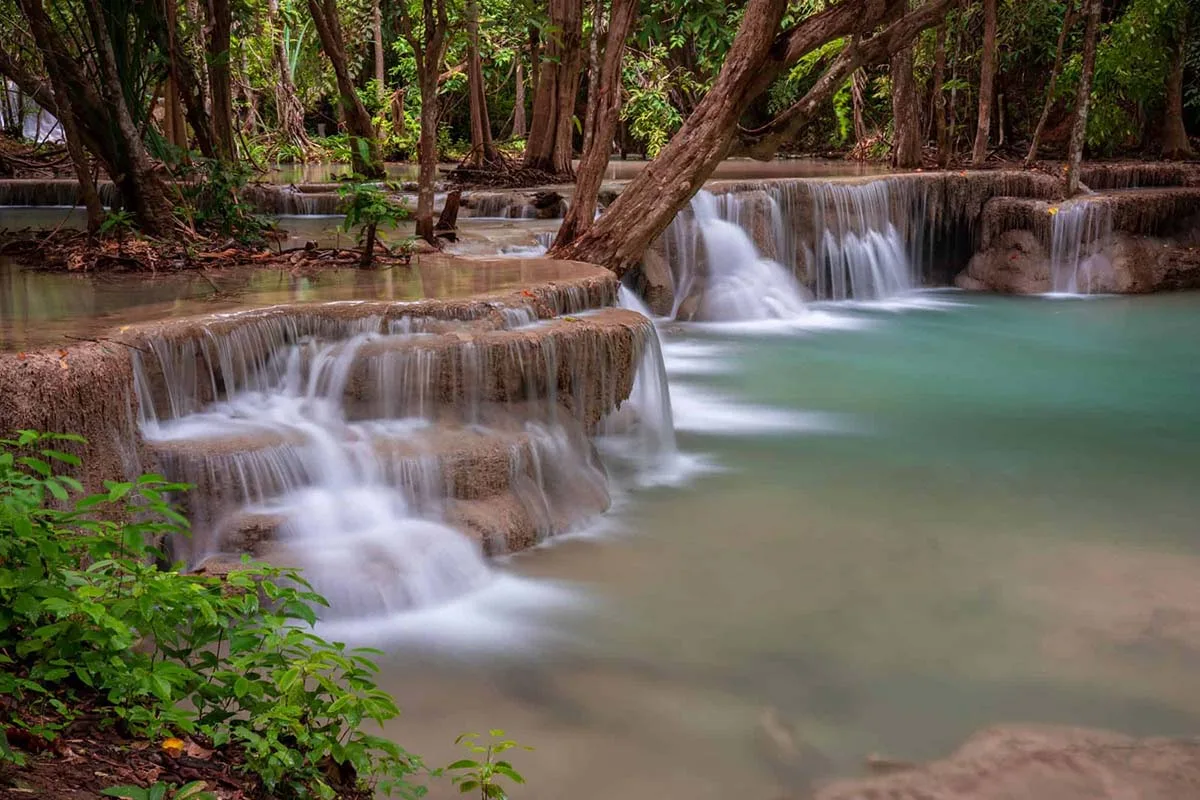
While most visitors chase the spotlight of Chiang Rai’s more famous waterfalls, Huay Mae Sai quietly flows beneath the radar—offering a serene, unspoiled escape for those willing to venture a little deeper into the forest. Hidden within a lush canopy of tropical trees, this multi-tiered waterfall tumbles gently over moss-covered rocks into clear, cool pools perfect for a refreshing dip.
The atmosphere here is pure tranquility: birdsong echoing through the trees, dappled sunlight filtering through the leaves, and the soothing rush of water creating nature’s own soundtrack. It’s the kind of place where you can truly unplug—no crowds, no noise, just the quiet rhythm of the jungle.
Locals often visit for weekend picnics or quiet meditation, and if you arrive early, you might have the entire cascade to yourself. The trail to the falls is short but scenic, winding through bamboo groves and fern-covered paths that feel like a scene from a nature documentary.
Travel Tip: Bring water shoes for slippery rocks and pack light snacks for a forest-side picnic. Combine your visit with a stop at Pong Phra Bat Hot Springs nearby for a perfect nature-themed day trip.
8. Long Neck Karen Village – Tradition, Resilience, and Cultural Dialogue
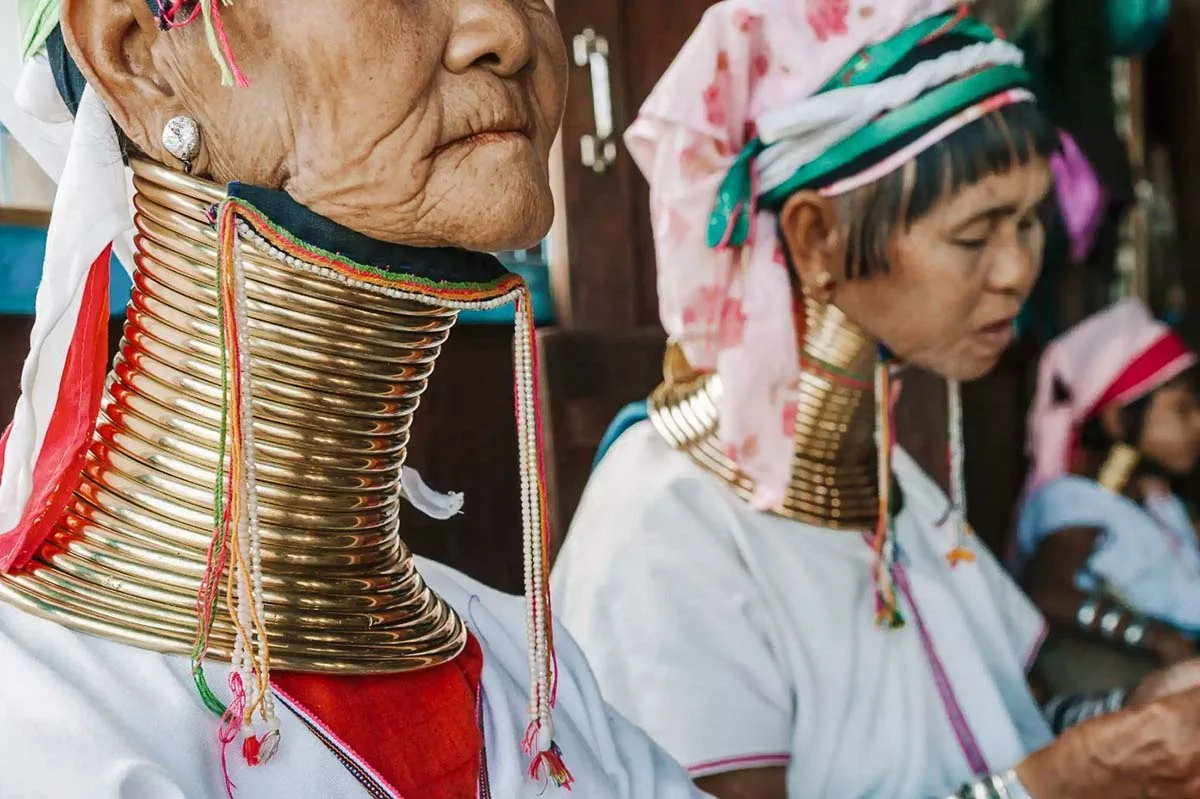
For a truly unique cultural experience, venture to the Long Neck Karen Village, home to the Padaung subgroup of the Karen people—renowned for their striking tradition of wearing brass rings around their necks. These coils, added gradually from a young age, create the visual illusion of elongated necks and have become a symbol of identity, beauty, and resilience within their community.
While the village’s role as a tourist attraction has sparked debate, a respectful visit can offer meaningful insight into the lives, customs, and artistry of the Karen people. Visitors are welcomed into modest homes and workshops where women craft intricate textiles, jewelry, and carvings using techniques passed down through generations. Purchasing these handmade items directly supports local families and helps preserve cultural heritage.
Beyond the visual intrigue, the village invites deeper reflection on the intersection of tradition, tourism, and autonomy. Many residents choose to share their stories, offering perspectives on their history, beliefs, and the challenges of maintaining identity in a rapidly changing world.
Travel Tip: Approach your visit with curiosity and respect. Engage in conversation, ask questions, and avoid treating the experience as a photo op. If possible, go with a local guide who can provide context and facilitate meaningful exchanges.
9. Singha Park – Where Tea Fields Meet Adventure
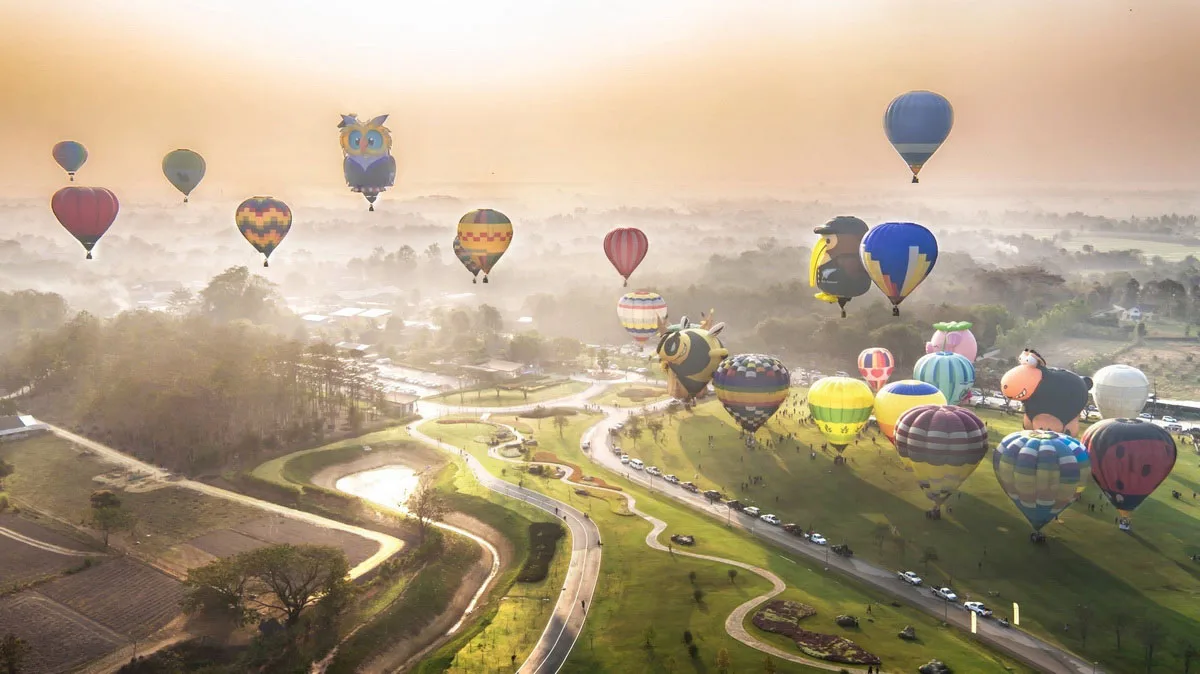
You’ve probably seen the iconic Singha beer logo—a golden lion roaring with regal flair—but did you know it has its own park? Singha Park Chiang Rai is a sprawling, family-friendly destination that blends agriculture, adventure, and branding brilliance into one scenic experience. Originally a tea plantation, the park has evolved into a multi-attraction wonderland that surprises even seasoned travelers.
Rolling hills of emerald tea fields stretch across the landscape, dotted with whimsical installations like oversized tea cups and lion statues perfect for your next Instagram post. But it’s not just about aesthetics—Singha Park offers zip-lining, cycling trails, paddle boating, and even a mini zoo featuring zebras, giraffes, and longhorn cattle. It’s Chiang Rai’s answer to eco-tourism with a playful twist.
The park also hosts seasonal festivals, including balloon shows and food fairs, making it a lively hub for both locals and visitors. And yes, there’s a café where you can sip Singha-branded tea while overlooking the fields—because branding never sleeps.
Travel Tip: Visit in the late afternoon for golden light across the tea terraces. Entry is free, but some activities require tickets. Don’t miss the farm-to-table restaurant for fresh Thai fusion dishes made with local ingredients.
10. The Hall of Opium – Unveiling the Shadows of the Golden Triangle
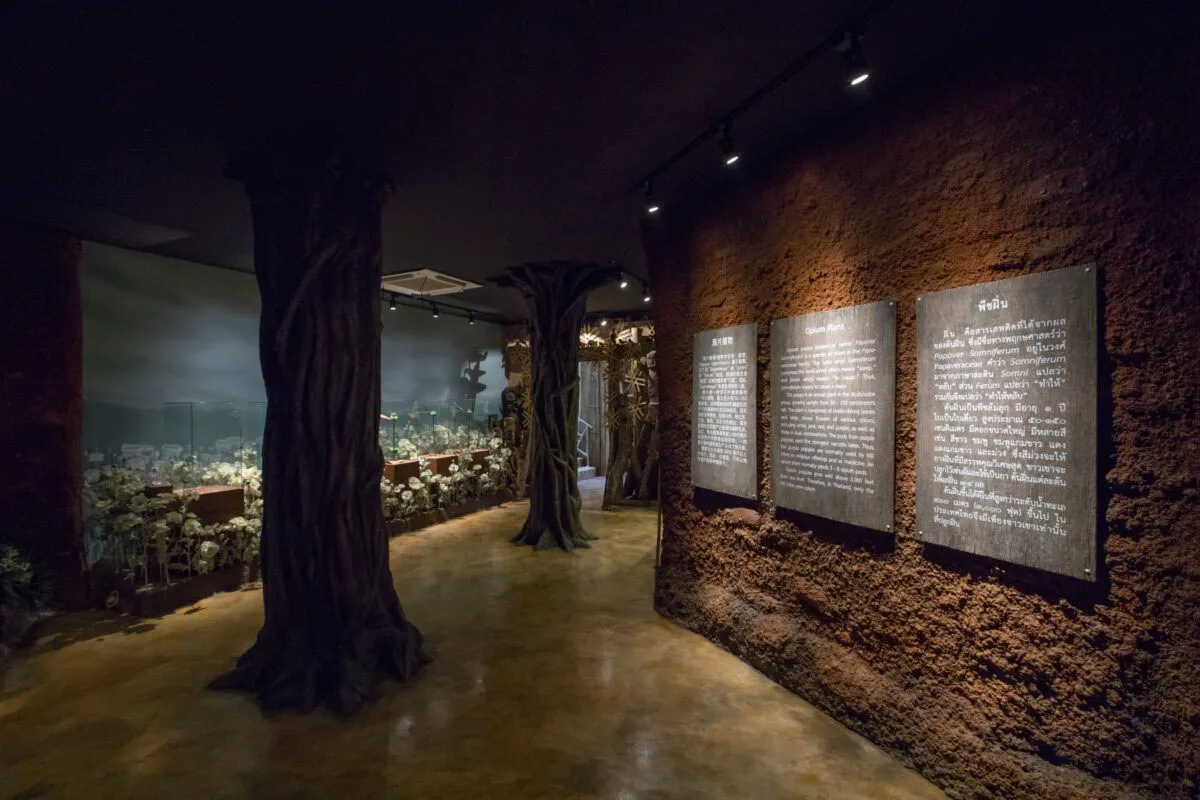
History buffs, this one’s for you—but be prepared to confront the darker chapters of Southeast Asia’s past. Nestled near the infamous Golden Triangle, where Thailand, Laos, and Myanmar converge, the Hall of Opium is a world-class museum that pulls no punches in chronicling the rise and fall of the region’s opium trade. It’s as educational as it is haunting, offering a sobering look at addiction, exploitation, and the global forces that shaped this once-notorious corridor.
Inside, you’ll journey through immersive exhibits that trace opium’s origins—from ancient medicinal use to colonial commodification and modern-day trafficking. The museum uses cutting-edge storytelling: atmospheric lighting, multimedia displays, and life-size dioramas that transport you into opium dens, poppy fields, and political war rooms. It’s not just a history lesson—it’s a visceral experience.
Beyond the facts and figures, the Hall of Opium invites reflection on the human cost of addiction and the resilience of communities that have fought to reclaim their future. It’s a powerful counterpoint to the scenic beauty of the region, reminding visitors that paradise often hides painful truths.
Travel Tip: Located near Sop Ruak village, the museum pairs well with a visit to the Golden Triangle viewpoint. Allow at least two hours to explore fully, and consider ending your visit with a quiet walk through the surrounding gardens to decompress.
10 Hidden Gems in Chiang Rai FAQ
Wat Rong Suea Ten is a stunning, lesser-known temple in Chiang Rai, famous for its vibrant blue hues and intricate artwork.
Phu Chi Fa offers breathtaking sunrise views and is a must-visit for nature lovers.
Yes! The Blue Temple (Wat Rong Suea Ten) is a lesser-known but stunning alternative to the White Temple.
You can explore tea plantations, visit unique museums like the Black House, or relax in hidden hot springs.
Final Thoughts – Chiang Rai’s Quiet Magic
Chiang Rai is more than just temples and night markets—it’s a mosaic of mystery, artistry, and natural wonder waiting to be uncovered. From surreal blue sanctuaries and jungle hot springs to mountaintop sunrises and haunting museums, each hidden gem tells a story that defies the ordinary.
Whether you’re chasing clouds at Phu Chi Fa, sipping tea in the highlands, or reflecting on history at the Hall of Opium, Chiang Rai invites you to slow down, look deeper, and connect with Thailand’s quieter soul.
Have you explored any of these offbeat treasures? Share your favorite moments, tips, or discoveries in the comments below—and help fellow travelers uncover the magic that lies just beyond the guidebooks.
